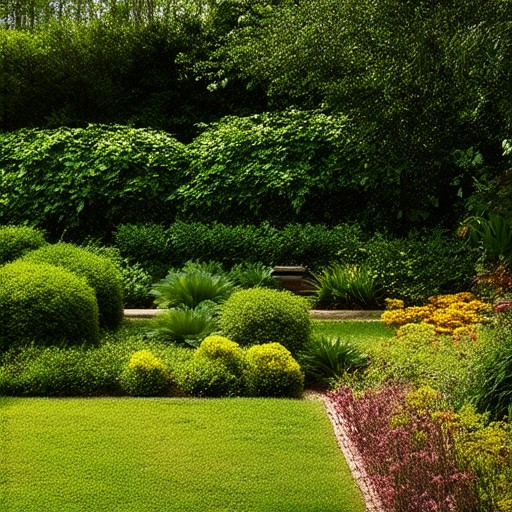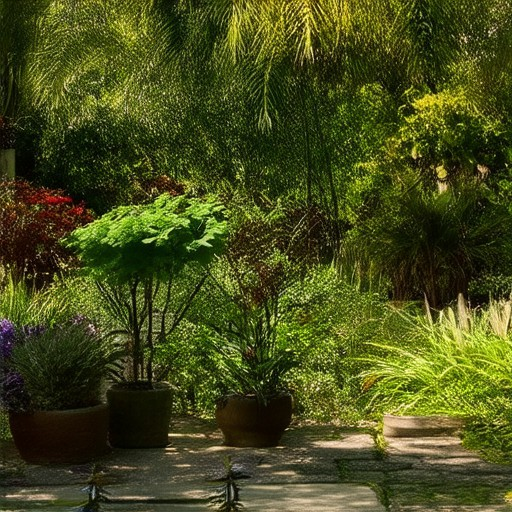Sustainable gardening has emerged as a cornerstone of modern eco-conscious living, offering a practical way to cultivate food and beauty while minimizing harm to the environment. For anyone looking to embrace this transformative practice, the journey begins with understanding the fundamental principles that ensure both sustainability and productivity. Whether you’re a seasoned gardener seeking to refine your techniques or a newcomer eager to dip your toes into the world of green thumb-ing, this guide provides a comprehensive roadmap to mastering sustainable gardening tips that work for every gardener.
Key Takeaways
- Compost Regularly: Turn kitchen scraps and yard waste into nutrient-rich compost to enrich your soil naturally. Use a compost bin and follow these composting tips for optimal results.
- Choose Native Plants: Select plants suited to your region’s climate and soil conditions to reduce water usage and support local wildlife. Discover how to identify and plant native species.
- Mulch Appropriately: Apply organic mulch, such as wood chips or leaves, to retain moisture, suppress weeds, and regulate soil temperature. Check out our guide on effective mulching techniques.
- Water Efficiently: Use drip irrigation or rain barrels to minimize water waste. Explore our water-saving gardening methods to create a more sustainable setup.
- Use Renewable Energy Tools: Opt for solar-powered garden tools or manual options like push lawn mowers to reduce reliance on fossil fuels. Learn more about eco-friendly gardening equipment.
- Support Local Ecosystems: Plant pollinator-friendly flowers and birds attracters to contribute to biodiversity. Find out how to create a habitat garden.
- Avoid Harmful Pesticides: Use natural alternatives like neem oil or companion planting to control pests. Discover safe and effective pest management strategies.
- Reduce Garden Waste: Compost or recycle plant trimmings and household waste to minimize landfill contributions. Check our garden waste management tips.
- Plan Thoughtfully: Design your garden to maximize space, sunlight, and accessibility. Get tips on efficient garden planning.
- Share Knowledge: Teach others about sustainable gardening by sharing your tips and experiences. Inspire your community with educational gardening resources.

How to Start Sustainable Gardening
Sustainable gardening is an eco-friendly approach to cultivating plants that benefits both the environment and your lifestyle. Here’s a step-by-step guide to help you begin:
1. Choose the Right Location
Select a spot in your yard or balcony that receives adequate sunlight but isn’t too harsh. Consider factors like soil type and accessibility for watering.
2. Opt for Native Plants
Native plants are ideal as they’re adapted to your local climate, requiring less water and fewer pesticides. Visit local nurseries or consult experts to find suitable species.
3. Implement Water Conservation Techniques
Install drip irrigation systems to conserve water. Use mulch to retain soil moisture and suppress weeds. Consider using rain barrels to capture runoff water for irrigation.
Benefits of Mulching
Apply wood chips or straw around plants to keep soil moist and reduce weed growth. Maintain a thin layer (2-3 inches) for optimal effectiveness.
4. Compost Organically
Set up a compost bin to recycle kitchen scraps and yard waste. Add earthworm castings or compost tea to enrich your soil naturally. Keep the area tidy to deter pests.
5. Enhance Soil Health
Test your soil’s pH levels to ensure it suits your plants. Regularly amend the soil with organic matter like compost or manure to improve fertility and structure.
6. Practice Water-Wise Gardening
Use drought-tolerant plants and efficient watering methods. Rain barrels can significantly reduce your reliance on tap water, making your garden more self-sufficient.
7. Fertilize Sustainably
Opt for natural fertilizers such as compost or worm castings. Apply these in moderation to avoid over-fertilizing, which can harm the environment.
8. Manage Pests Naturally
Combat pests with methods like neem oil, companion planting, or biological controls. Avoid synthetic pesticides to protect pollinators and your ecosystem.
9. Plan for Succession Planting
Extend your growing season by planting different crops at various times. This maximizes space and reduces waste, ensuring a continuous harvest.
10. Recycle Materials
Transform old wood, cardboard, or metal into garden structures. These recycled items add functionality without depleting resources.
11. Join a Community Garden
Consider joining a local community garden to network with fellow gardeners and gain valuable insights. Share produce with neighbors for added benefits.
12. Track Progress and Learn
Keep a gardening journal to monitor your plants’ health and progress. Document challenges and successes to refine your techniques over time.
By following these steps, you’ll establish a sustainable garden that thrives while contributing positively to the environment. Start small, stay informed, and enjoy the rewards of your green space!
Best Sustainable Gardening Tips for Beginners
Sustainable gardening is an eco-friendly approach that benefits both the environment and your garden. Here are some practical tips to get started:
- Composting:** Start a compost pile to recycle kitchen scraps and yard waste into nutrient-rich soil. This reduces landfill waste and enriches your soil naturally.
- Choose Native Plants:** Select plants native to your region, as they require less water, fewer pesticides, and are better adapted to local conditions.
- Water Conservation:** Use rainwater collection systems or drip irrigation to minimize water usage. Mulch around plants to retain moisture in the soil.
- Mulching:** Apply organic mulch, such as wood chips or leaves, to suppress weeds, retain soil moisture, and regulate soil temperature.
- Vertical Gardening:** Opt for vertical gardens or hanging baskets to save space and reduce the need for chemical fertilizers.
- Organic Pest Control:** Use natural methods like ladybugs or neem oil to control pests instead of harmful chemicals.
- Companion Planting:** Grow plants that benefit each other, such as marigolds to deter pests or tomatoes to attract pollinators.
- Seasonal Planting:** Plant vegetables and flowers that are suited to your climate zone to minimize energy use and waste.
- Cover Cropping:** Cover bare soil with clover or other ground cover plants to prevent erosion and improve soil health.
- Reduce Waste:** Use biodegradable pots and avoid plastic wrap when transplanting seedlings.
By adopting these sustainable practices, you can create a thriving, eco-friendly garden while contributing positively to the environment. Explore more tips and resources on sustainable gardening to enhance your green space.

Sustainable Gardening Tips to Reduce Your Environmental Footprint
- 1. Implement Drip Irrigation: Use drip irrigation systems to conserve water and reduce runoff. This method delivers water directly to plant roots, minimizing waste.
- 2. Practice Composting: Create a compost pile to recycle kitchen scraps and yard waste. This not only reduces landfill waste but also enriches your soil with natural nutrients.
- 3. Utilize Native Plants: Choose plants native to your region. These varieties are adapted to local conditions, requiring less water and supporting local wildlife.
- 4. Apply Mulch: Spread mulch around your garden beds to retain moisture, suppress weeds, and regulate soil temperature.
- 5. Opt for Vertical Gardens: Install vertical gardens or trellises to maximize space usage and reduce the need for chemical pesticides.
- 6. Use Organic Fertilizers: Replace synthetic fertilizers with organic options like compost or worm castings to promote healthy plant growth without harmful runoff.
- 7. Employ Agrotextiles: Cover garden beds with agrotextiles to protect plants from pests and reduce the need for chemical treatments.
- 8. Plant Pollinator-Friendly Flowers: Select flowers that attract pollinators like bees and butterflies to support biodiversity and improve ecosystem health.
- 9. Rotate Crops Strategically: Rotate vegetable crops to maintain soil health and reduce the risk of pests and diseases, minimizing the need for chemical controls.
- 10. Design an Efficient Garden Layout: Plan your garden to maximize space efficiency, reduce waste, and allow for easy access to all areas.
For more detailed guides and resources, check out our Sustainable Gardening Guide . Additionally, explore Competitor’s Comprehensive Sustainable Gardening Tips for further insights and practical advice.

Sustainable Gardening Tips Everyone Should Know
- Compost Regularly: Turn kitchen scraps and yard waste into nutrient-rich compost to enrich your soil naturally. Use a compost bin and follow these composting tips for optimal results.
- Choose Native Plants: Select plants suited to your region’s climate and soil conditions to reduce water usage and support local wildlife. Discover how to identify and plant native species .
- Mulch Appropriately: Apply organic mulch, such as wood chips or leaves, to retain moisture, suppress weeds, and regulate soil temperature. Check out our guide on effective mulching techniques .
- Water Efficiently: Use drip irrigation or rain barrels to minimize water waste. Explore our water-saving gardening methods to create a more sustainable setup.
- Use Renewable Energy Tools: Opt for solar-powered garden tools or manual options like push lawn mowers to reduce reliance on fossil fuels. Learn more about eco-friendly gardening equipment .
- Support Local Ecosystems: Plant pollinator-friendly flowers and birds attracters to contribute to biodiversity. Find out how to create a habitat garden .
- Avoid Harmful Pesticides: Use natural alternatives like neem oil or companion planting to control pests. Discover safe and effective pest management strategies .
- Reduce Garden Waste: Compost or recycle plant trimmings and household waste to minimize landfill contributions. Check our garden waste management tips .
- Plan Thoughtfully: Design your garden to maximize space, sunlight, and accessibility. Get tips on efficient garden planning .
- Share Knowledge: Teach others about sustainable gardening by sharing your tips and experiences. Inspire your community with educational gardening resources .
How to Begin Sustainable and Organic Gardening
Sustainable and organic gardening is an eco-friendly approach to growing your own fruits, vegetables, and flowers. Here are some effective strategies to get started:
1. Assess Your Property and Resources
- Evaluate your yard’s sunlight exposure, soil type, and available space.
- Research local plants suited for your climate to maximize sustainability.
- Consider water availability and efficient irrigation systems.
- Check for any local regulations or guidelines regarding organic farming.
2. Plan Your Garden Layout
- Choose a location that receives adequate sunlight, preferably 6 hours a day.
- Designate areas for vegetables, herbs, and flowers, incorporating biodiversity.
- Use raised beds or containers for better drainage and easier maintenance.
- Opt for organic mulch to retain moisture and suppress weeds naturally.
3. Select the Right Plants
- Choose native plants suited to your region for minimal maintenance and maximum benefit.
- Pick heirloom or open-pollinated varieties for better flavor and adaptability.
- Avoid chemical fertilizers and pesticides; opt for natural alternatives.
- Consider companion planting to deter pests and improve plant health.
4. Implement Composting Systems
- Start a compost pile with kitchen scraps and yard waste.
- Use worm composting for a nutrient-rich fertilizer.
- Apply compost regularly to improve soil fertility and plant growth.
- Explore local resources or workshops for composting techniques.
5. Water Efficiently and Sustainably
- Install drip irrigation or rainwater harvesting systems.
- Use greywater for outdoor plants when possible.
- Water during the early morning or late evening to minimize evaporation.
- Monitor soil moisture to avoid overwatering and conserve resources.
6. Practice Natural Pest Control
- Encourage beneficial insects like ladybugs and lacewings.
- Use organic sprays or neem oil for minor pest issues.
- Rotate crops to disrupt pest life cycles and reduce disease spread.
- Seal garbage cans and store food securely to prevent attractants.
7. Maintain Biodiversity and Timing
- Plant a variety of species to support pollinators and wildlife.
- Follow seasonal planting calendars to maximize productivity.
- Practice crop rotation to maintain soil health and prevent diseases.
- Harvest regularly to encourage continuous production.
By following these steps, you can create a thriving, sustainable garden that benefits both your environment and your family. Remember to stay patient and consistent, as sustainable gardening takes time to fully realize its rewards.

What are the top sustainable gardening tips everyone should know?
1. Prioritize Water Conservation
Install drip irrigation systems to minimize water usage and prevent overwatering. Choose drought-tolerant plants suited to your local climate to reduce the need for frequent watering.
2. Compost Responsibly
Start a compost pile to recycle kitchen scraps and yard waste. Use compost as a natural fertilizer to enrich your soil and promote plant growth.
3. Opt for Native Plants
Select plants native to your region to reduce water consumption and attract local wildlife. Native plants are better adapted to your environment and require less maintenance.
4. Practice Organic Pest Control
Use natural methods like companion planting, beneficial insects, or neem oil to manage pests. Avoid chemical pesticides to protect your garden and the environment.
5. Use Mulch Effectively
Apply thick layers of organic mulch, such as wood chips or leaves, to retain moisture, suppress weeds, and regulate soil temperature.
6. Engage in Vertical Gardening
Utilize space-saving techniques like vertical gardens or hanging baskets to grow plants efficiently without expanding your garden’s footprint.
7. Plan Seasonal Planting
Grow crops and flowers that align with your local season to reduce energy use and enjoy fresh produce year-round. Consider cold frames or row covers for extended growing periods.
8. Support Pollinators
Plant flowers that attract bees, butterflies, and other pollinators. Create habitats by leaving deadwood or installing bee hotels in your garden.
9. Reduce Lawn Areas
Convert lawns to gardens or wildflower meadows to save water and support biodiversity. Lawns consume significant water, so minimizing them helps conserve resources.
10. Recycle Garden Waste
Don’t toss garden clippings and trimmings in the trash. Shred them and mix with compostable materials to create nutrient-rich mulch or feed for animals.
By adopting these sustainable gardening practices, you can create a thriving, eco-friendly garden while contributing positively to the environment. Start small and gradually incorporate more sustainable methods to see the biggest impact.




0 Comments